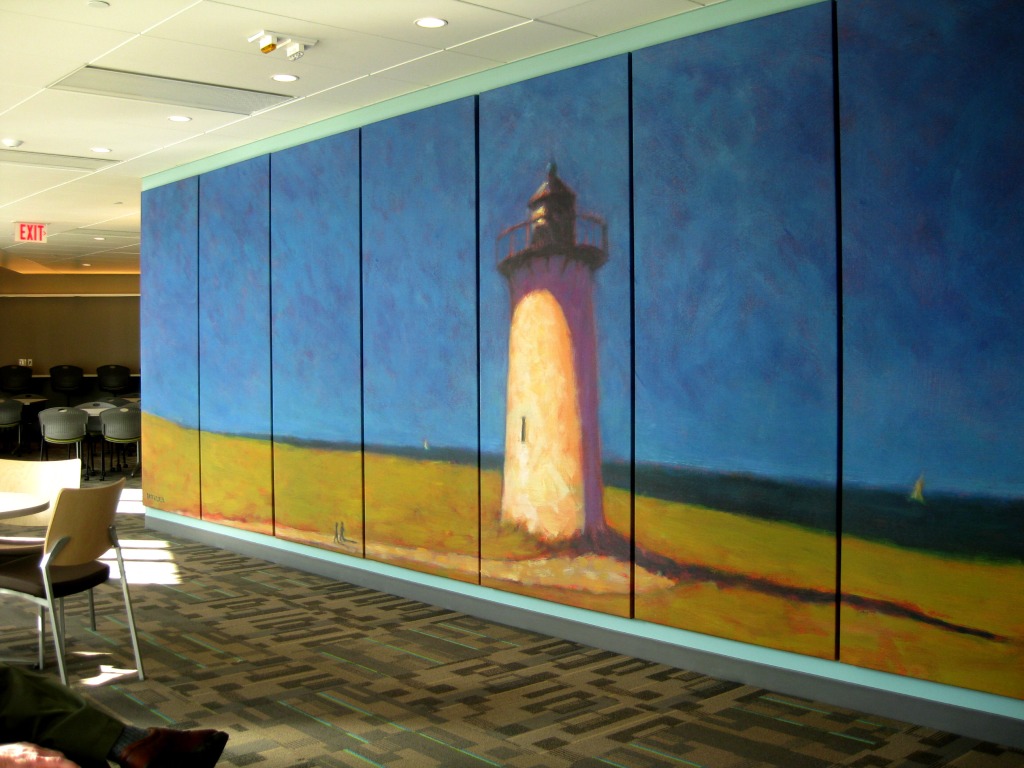

I was recently contacted by Peter Shaffer of Dimella Shaffer Architects, in Boston, to do a painting for the new Allied Health Professions and Student Services Building at at North Shore Community College in Danvers, MA.
This building is the first state-funded Net Zero Energy Building in Massachusetts. Because of the building’s environmental focus, Mr. Shaffer proposed a painting that implied a connection between the building’s greenness and the school itself. The school’s logo mark is a lighthouse beacon, so it seemed expanding that into a North Shoreish lighthouse landscape might work. With only a weekend to turn the piece around, the school approved the painting, which was digitized and output onto the large panels in the photo above.

For years I passed this shed daily on my way to work. It’s an unimpressive old structure, on the edge of a property on an old country road that is quickly filling with McMansions. The building is fairly nondescript, except in Spring, when the massive forsythia is in full bloom, and the shed’s bluish color stands out in contrast.
 Abstract painting or absolutely nothing? Technically, it’s the latter. I took this photo while waiting (and waiting) at a Starbucks drive thru.
Abstract painting or absolutely nothing? Technically, it’s the latter. I took this photo while waiting (and waiting) at a Starbucks drive thru.

Barn Stall :: 30 x 30 :: 2011

First Light : 48 x 36 : 2011